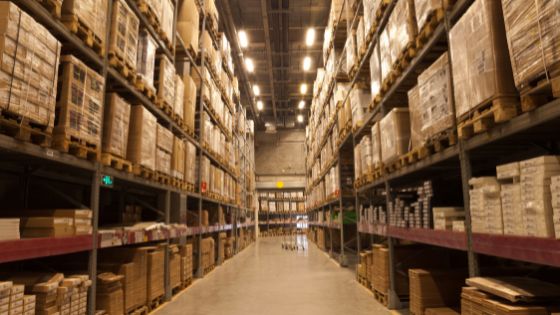Under the law, employers must execute and maintain warehouse safety measures. According to New York Times, Amazon is working to convince the public that its warehouses are safe during the pandemic. The safety measures should focus on the warehouse itself and all the workplace procedures. Nevertheless, you may overlook some safety practices, especially in large and busy warehouses. Thus, warehouse safety should be a matter of priority. Here are tips to help you improve and achieve optimum business warehouse safety.
1. Safety of Your Shelves and Racks
Before stacking, you should evaluate the weight a rack can carry. Ensure your employees are trained to stack materials to achieve proper weight distribution. Poor shelving or racking of boxes can be dangerous as it may result in the toppling of shelves. Thus, the falling objects may cause injuries to your employees. So, ensure you regularly inspect to confirm your shelving and racking are safe and in working condition. Make necessary repairs or even do the replacement of broken or old ones. You may also use bumpers and racking protection to guard the shelves and racks against wear and tear.

2. Operation of Vehicle and Equipment Safely
The operation of heavy machinery like forklifts has been attributed to most workplace injuries and deaths. The first step in preventing accidents involving such heavy machinery is ensuring only qualified workers operate them. Besides, your certified workers should operate the vehicles and heavy equipment while strictly following the guidelines. This is also why it is important to invest in high-quality equipment such as sideloaders for your business. They will help your team to be productive while staying safe. If any of your employees are found mishandling equipment, they should be subjected to a strict disciplinary procedure.
In addition, you should furnish the racking, columns, and dock areas with bumpers. It will provide further protection, thereby minimizing damage to the warehouse, workers, and equipment such as forklifts. More importantly, aisles and loading docks should be kept clear for the safe maneuver of forklifts around the warehouse. Also, ensure your vehicles are maintained as per the manufacturer’s recommendations.
3. Wear Protective Clothing
Legally, employers are obligated to provide employees with protective equipment. Personal protective equipment (PPE) will help to prevent workplace injuries. You should provide PPEs that are appropriate to the nature of the work each employee performs in your business warehouse. Your warehouse employees should wear bright reflector clothing to prevent vehicle accidents. Employees working with machines should wear well-fitting clothes to avoid being caught in the machinery. Other common business warehouse PPEs include:
- Steel-toed boots to protect the foot
- Hard hat or helmets
- Eye goggles
- Masks
- Gloves
4. Enhance Employee Ergonomics
It involves training, awareness, and other safety measures you can put in place to reduce workplace discomfort and injuries. Ensure you design your workspace’s safety, considering the employees’ capabilities and limitations. Most of the accidents in business warehouses can be attributed to human errors. Often, this is due to a lack of proper training or mental and physical fatigue.
Consequently, you should properly train your workers to operate various equipment in your business warehouse. Also, ensure your employees are conscious of the dangers of working while exhausted or sick. You should give your workers enough breaks and allow them to work reasonable shifts. Finally, ensure you develop a safety policy for your business warehouse.
5. Keep Your Warehouse Tidy
Besides its aesthetic value, keeping your warehouse tidy improves safety. You should ensure aisles and loading dock areas are clean and tidy to prevent slips that may cause accidents. Employees should develop the habit of replacing equipment and pallets to keep the warehouse clean always.
Further, you can mark floors in your warehouse to identify high-risk areas. The safest routes and traffic flow system should be visible, thus helping to prevent crush injuries. You should ensure there are clear paths marked for pedestrians and vehicles. Ensure you mark all entrance bays, emergency exits, and safe passages.
Concluding Remarks
Besides being a legal requirement, business warehouse safety is essential for your employees’ well-being. Failure to implement necessary warehouse safety measures can cause injuries to your workers. Besides, poor workplace safety can be costly to your business. Such costs include sick pay for your injured employees and any fixing damages to the warehouse. In an extreme situation, it may lead to the closure of a section of your warehouse.
